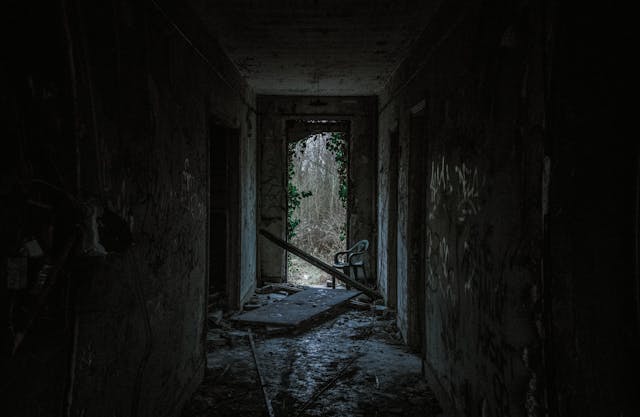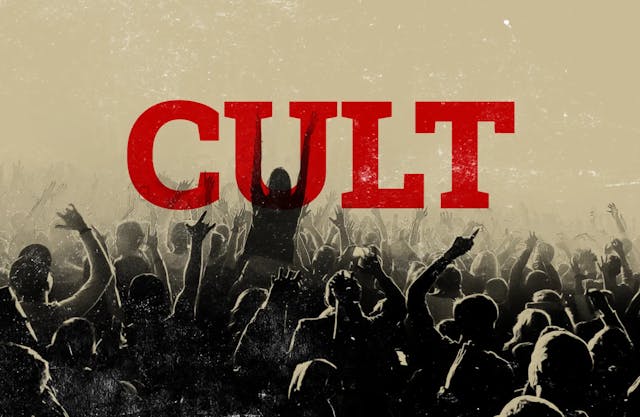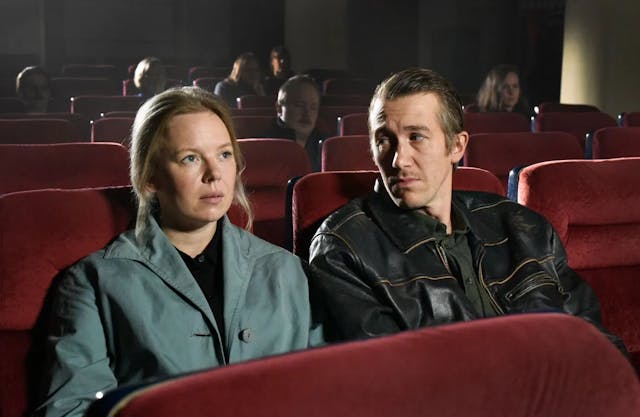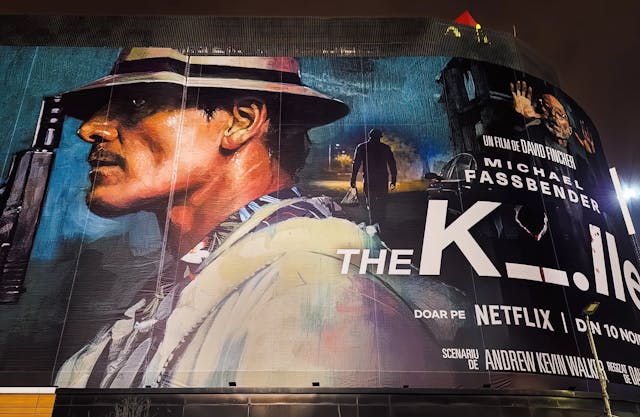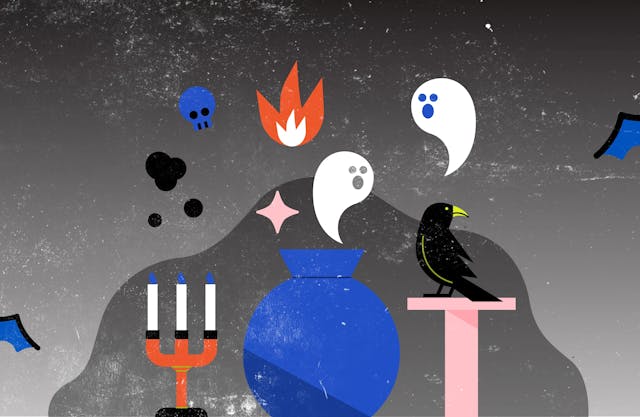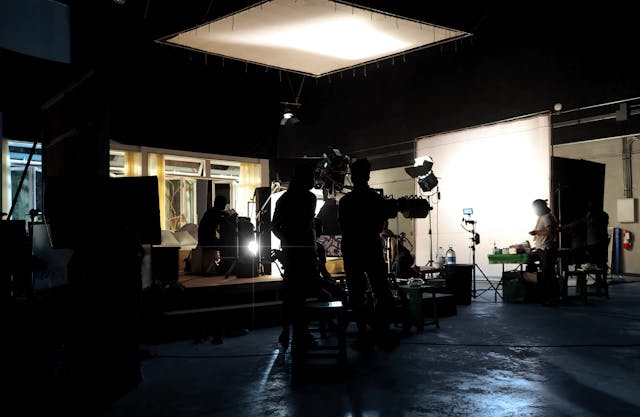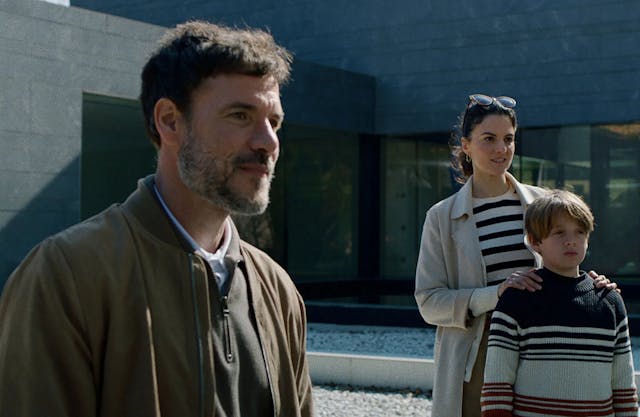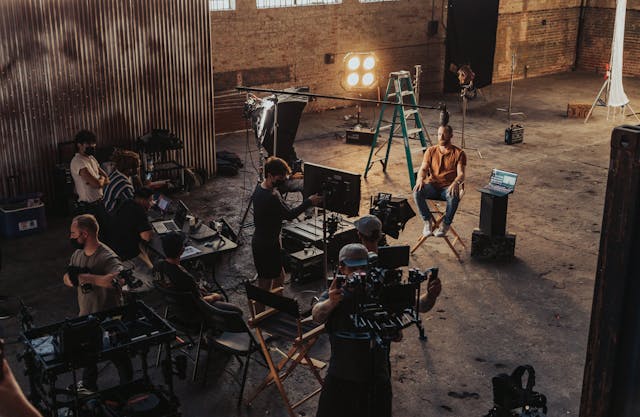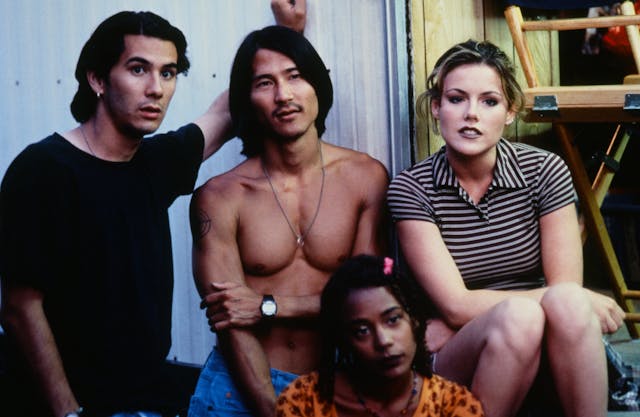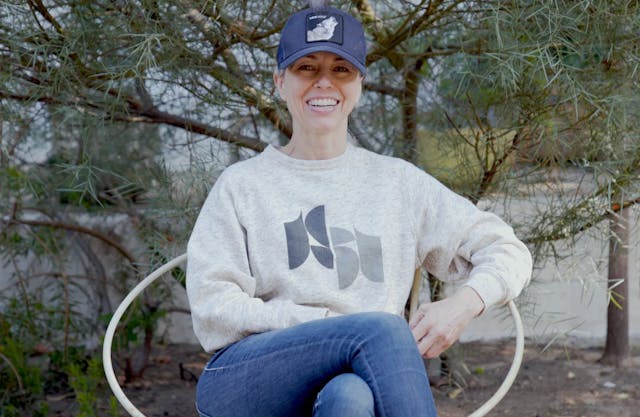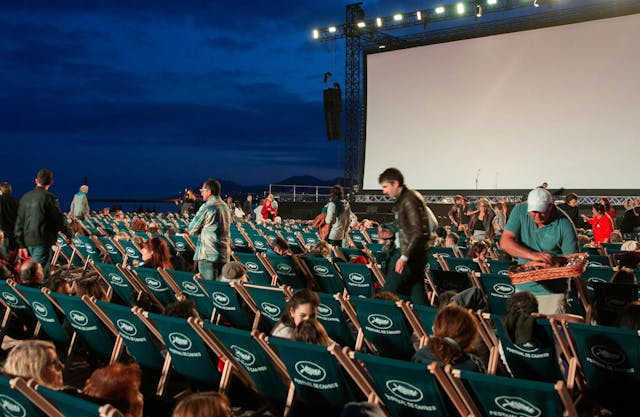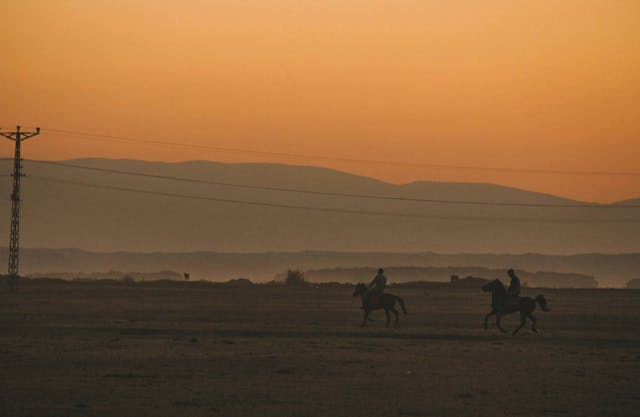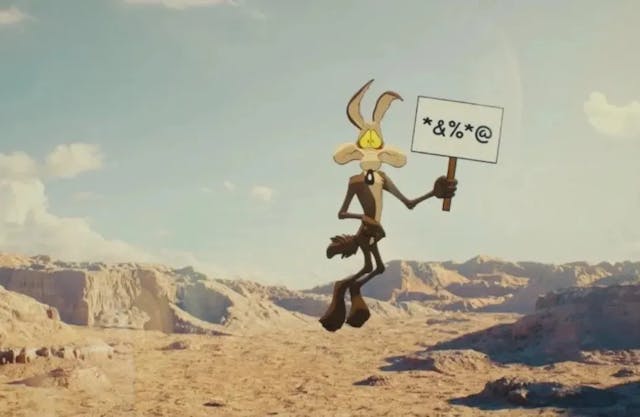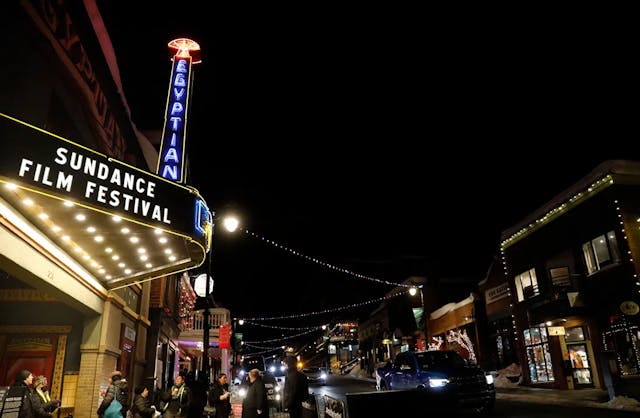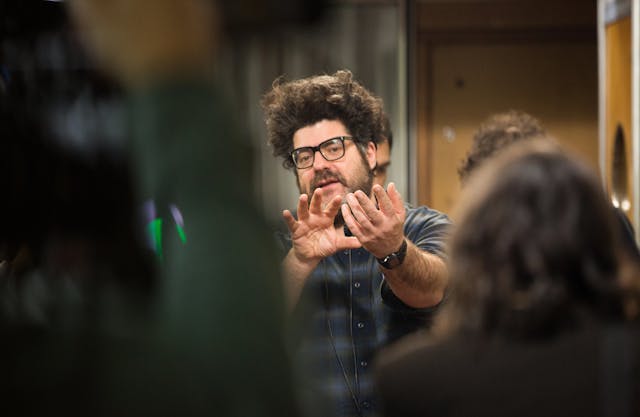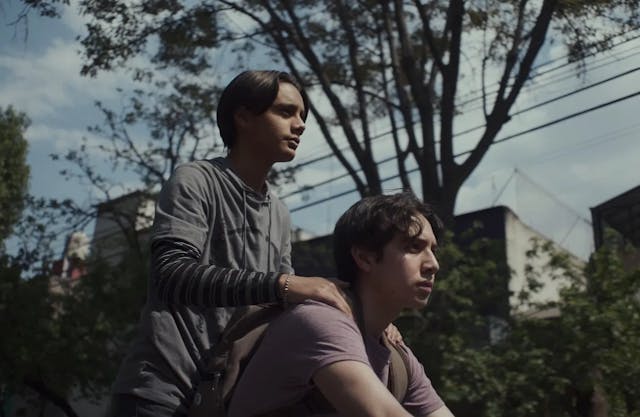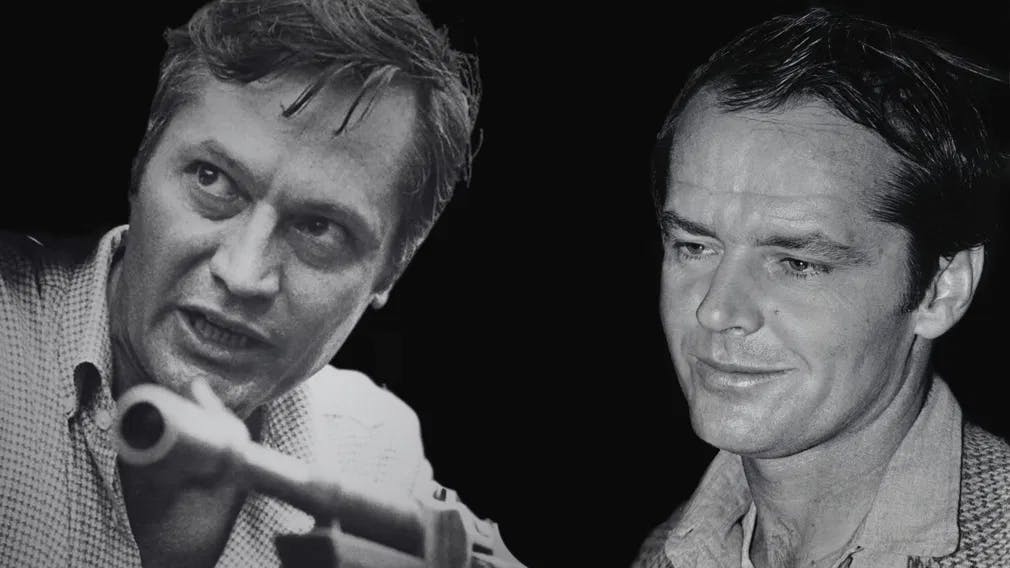
Jack Nicholson has been living offscreen since 2010. His last movie credit is a supporting role in James L. Brooks’ romantic comedy “How Do You Know,” starring Reese Witherspoon, Paul Rudd, and Owen Wilson. Age is merciless in Hollywood, cornering actors into Grandpa roles. You can’t blame Nicholson for it. Brooks directed him to a Best Supporting Actor Oscar in “Terms of Endearment” (1983) and Best Actor in “As Good As It Gets” (1997). He also gave him a powerful cameo in the sterling media satire “Broadcast News” (1987).
The subdued response to their fourth collaboration is unlikely to send the actor into a dark night of the soul. Like his generational partner Gene Hackman, he eased into retirement. They seem to have no need to keep toiling in front of the camera. But that might change soon.
The Golden Years of a Masterful Actor
Supposedly, Nicholson will be in “Napoleon,” a Steven Spielberg-produced TV miniseries. This would be the second time that Spielberg made one of Stanley Kubrick’s abandoned projects become a reality. The first was “A.I.: Artificial Intelligence,” which he directed as a feature film in 2001. At one point, Nicholson was set to take the lead role. Age might prevent that unless he performs the character in his late years. As of February 2023, Spielberg said at the Berlin Film Festival that he was working on the project, which would take the form of a seven-episode limited series for HBO. By then, Ridley Scott’s epic production with Joaquin Phoenix in the title role was already shooting, so the project is probably still in the works.
Surprisingly, it will be the first time Nicholson teams up with Spielberg. For a good three decades, he was one of the most sought-after actors in Hollywood, whose name was able to green-light projects and put people in the seats. He amassed seven Oscar nominations and won three times. He signed up with the best names in the business and seldom worked more than once with a director. His favorite was Bob Rafelson, with whom he did five movies, beginning with the classic “Five Easy Pieces” (1970). Next in line is Mike Nichols, with four. Their best collaboration was the first one, “Carnal Knowledge” (1971).
The one-offs’ list is sterling: Hal Ashby’s “The Last Detail” (1973), Roman Polanski’s “Chinatown” (1974), Michelangelo Antonioni’s “The Passenger” (1975), Milos Forman’s “One Flew Over The Cuckoo’s Nest” (1975), Stanley Kubrick’s “The Shinning” (1980), and John Huston’s “Prizzi’s Honor” (1985). That’s a partial but substantial list of the best directors of the XX Century. With such shiny baubles of cinephilia, it is easy to oversee his career's most important working relationship: producer and director Roger Corman, baptized as the Pope of Pop Cinema by director Bertrand Tessier.
When Jack Met Roger Corman
Nicholson met Corman while acting at the Player’s Ring Theatre. The Los Angeles-based company also served as a springboard for TV stars like Michael Landon (Little House on the Prairie) and Marlo Thomas (That Girl).
Roger Corman, the Pope of Pop Cinema, had been churning low budget indie movies for almost four years by the time Nicholson entered the fray through the big door - well, at least, the biggest door possible in Poverty Row. “The Cry Baby Killer” was the sixth movie Corman produced in 1958, out of 8. It’s a juvenile delinquent drama, a popular genre in the ‘50s, jumpstarted by the A-list “The Wild One” (Laslo Benedek, 1953) and “Blackboard Jungle” (Richard Brooks,1955). Corman’s movie compensated for modest production values with sensationalism. Nicholson hogs the scenery as a milquetoast teen who becomes a kidnapper after thinking he committed a homicide.
A couple of years later, Corman directed him again in a “Little Shop of Horrors” (1960). A quickie shot in a couple of days, the dark comedy offered Nicholson a supporting role as a masochistic patient of a sadistic dentist. After making an impression, he ends up as a meal for the carnivorous plant Audrey. The brief part proved his talent for comedy, and the movie became one of Corman’s biggest hits, not for its box office but for the afterlife it enjoyed in the entertainment industry. 22 Years later, Oscar-winning composer Alan Menken and lyricist Howard Ashman premiered a stage musical version off-Broadway, becoming a sleeper hit. Revivals in London’s West End, Canada, and Australia followed. In 1988, director Frank Oz, a veteran of “The Muppet Show,” produced a film version of the musical. Bill Murray took the role originated by Nicholson in the Corman original.
A Decade Under The Influence of The Grindhouse Master
For over a decade, his first as a working actor, Nicholson alternated one-off appearances in episodic television with roles in Corman’s productions. The importance of being regularly employed as an up-and-coming performer can not be minimized. The cut-rate western “The Broken Land” (1962) was followed by one of Corman’s most ambitious films by sheer force of the cast involved. “The Raven” (1963) belongs to the Gothic Grindhouse cycle of movies based or inspired by Edgar Alan Poe stories that bridged the distance between the drive-ins and the Art House. The film allowed the young actor to stand elbow to elbow next to classic Hollywood stars like Vincent Price, Boris Karloff, and Peter Lorre.
It was a primer for taking the main role in “The Terror” (1963). While not based on Poe’s writings, it is certainly inspired by its themes. It was one of the most convoluted productions in the Corman factory, filmed in jump and starts, manned by five alternative directors, including Francis Ford Coppola. Except for a late scene that bends the plot one twist beyond common sense, it’s hard to tell the process of making the movie was so fraught with difficulties. Credit must go to Nicholson. He is the glue that keeps everything together.
Corman’s School of Future Film Masters
Except for a handful of shooting days in “The Terror,” Nicholson never worked again with Coppola. Still, he found crucial collaborators for his career in the corps of up-and-coming filmmakers that passed through Corman’s makeshift film conservatory. One of the most important was director Monte Hellman, who also manned the production of “The Terror” for a few days. He would go on to do a few low budget movies with the actor, inside and outside of Corman’s operation.
First, there was “Flight to Fury” (1964), which Nicholson also wrote. It’s a thrilling drama about many desperadoes fighting over a cache of stolen diamonds in the Philippine jungles. In a surprising twist for an indie production, the movie was shot in the Philippines and not in a bush in Pasadena. The crew managed to hit two films there in one single trip. The other one is “Back Door to Hell” (1964). The war drama follows a US commando and a group of Filipino insurgents ganging up to destroy a Japanese base.
Hellman and Nicholson returned to the United States and the Corman fold for two Western dramas. First, “The Shooting” (1966), written by Carole Eastman. She would go on to pen three more movies with Nicholson: the classic “Five Easy Pieces” (Bob Rafelson, 1970), “The Fortune” (Mike Nichols, 1975), and “Man Trouble” (Rafelson, 1992). Nicholson wrote the script for the other, “Ride In The Whirlwind” (1966). It’s a little-known fact that the actor began his career toying with becoming a writer and would go on to amass seven produced works. By the early seventies, he would abandon this track.
Lift Off to Hollywood
Nicholson wrote and starred in “The Trip” (1967), his last movie under Corman’s auspices. More importantly, it connected him with fellow actors Peter Fonda and Dennis Hopper. Fonda plays a TV advertising director reeling after his wife leaves him for another man. To deal with the trauma, he decides to explore the alleged healing qualities of LSD with the help of his friend John (Bruce Dern) and fellow drug enthusiast John (Hopper). The movie belonged to the thriving genre of counter-culture dramas, halfway between exploitation, screed, and propaganda.
“The Trip” is largely forgotten, a footnote in Nicholson’s career. Alas, Hopper and Fonda sought him out for a pivotal role in their following movie, which ended up being the best counterculture movie and a crossover success into the mainstream. “Easy Rider” (1969) was written by Fonda and directed by Hooper. They also took the lead roles as a couple of drug-smuggling bikers finding freedom and hostility in a cross-country pilgrimage to New Orleans in time for Mardi Gras. Nicholson plays a “straight” family man they pick along the road, with tragic results due to the intervention of “The Man.”
The indie production was picked up for distribution by Columbia Pictures and became a box-office hit. “Easy Rider” won a Best First Film Award at the Cannes Film Festival, where it was also nominated for the Palme d’Or. It gathered two Oscar nominations: Best Screenplay for Fonda and Best Supporting Actor for Nicholson. He lost to Gig Young’s devilish MC in “They Shoot Horses, Don’t They” (Sydney Pollack, 1969), but it didn’t matter. The true prize was pushing Nicholson into the public’s consciousness in a showy role that made his stardom seem inevitable.
He did one more indie biker drama, “The Rebel Rousers” (Martin B. Cohen, 1970), but after that, he was seen next to Barbra Streisand in “On A Clear Day You Can See Forever” (Vincente Minelli, 1971). The mainstream romantic comedy was seen as a misfire but did not tarnish his reputation. The same year, “Five Easy Pieces” (Rafelson, 1970) sealed the deal with an Oscar nomination for Best Actor in a Leading Role. Three decades as one of America’s top actors. A total of 12 Oscar nominations and three wins attest to his success.
Parting Words
Nicholson did not return to the Corman fold, but in a way, that was the natural progression of many talents that got their start in his assembly line of cheap and effective indie movies. The list is long: directors Coppola, Ron Howard, Monte Hellman, Jonathan Demme, Joe Dante, Peter Bogdanovich, James Cameron, and Martin Scorsese. That's plenty of Best Director Oscar winners and nominees. You can track all the strains of American cinema right then and there. They went on to do sublime popular works of art, rousing blockbusters, and indie classics for the Art House.
The acting talent is also stellar and varied. There’s Peter Fonda, Bruce Dern, Diane Ladd, William Shatner, Sylvester Stallone, Barbara Hershey, and many more. The education of Jack Nicholson at the Corman school proves that indie movies were - and are - an important stepping stone and a crucial part of the film production ecosystem.
Want to get an email when we publish new content?
Subscribe today